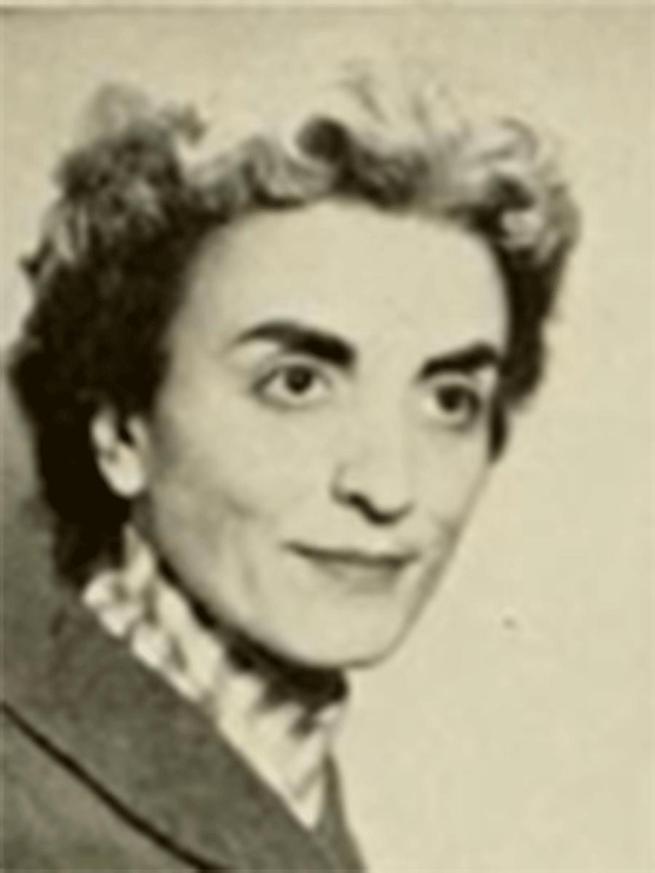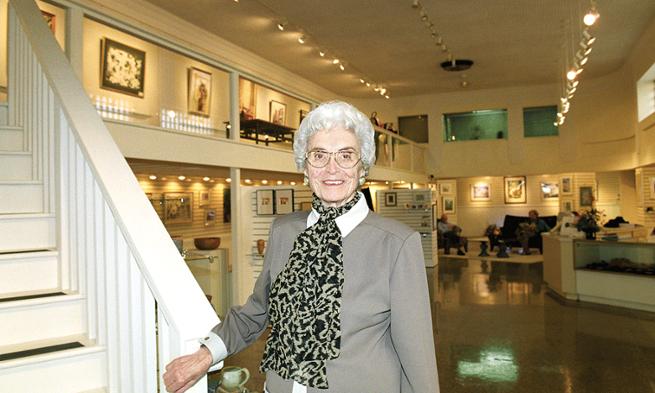Crystal Theodore
Professors We Love
Recognizing passion
By Judith Burkholder Espinoza ('65)
Originally published in Spring 2003, this is just one of many stories from Madison magazine's award-winning Professors You Love series, written by JMU students and alumni, about the professors that have made the most impact on their lives — then, and now.
I had art professor Crystal Theodore for various art classes on my way to my B.A. in art education. But I remember best her class on art history. I admired her vivacity, the intelligent and articulate way she spoke about everything that interested her. I expected her to show her bias as she presented each new period, phase, style, change in the world of art. That never happened, because she was passionate about all of it.
"She taught students to recognize the passion, genius and individuality of artists."As we studied each movement and variation, Dr. Theodore made the environment where the art was created come alive. The materials that were used were often interesting. But the most fascinating thing was the way she could look at a work of art and know who created it and when, how other artists had influenced that work, and how that work became a stepping stone to the next period of art. It was a revelation to me that an artist's work so identifies him or her. Dr. Theodore had a gift for describing the style of the artist that left you with a sense of wonder, beauty and awe at the creative process itself.
She seemed to truly love and understand and personally know every artist of any note who ever lived. I well remember the standing assignment that led up to each test in art history class. There was a set of 30 or more photographs of art from the period we were studying. We knew that on the test there would be a section where we would have to identify the name of the artist and the name of the art piece as she held up photographs, flash card style or with an overhead projector. We pored over that stack again and again before the test, sometimes alone and sometimes in groups. Always it seemed like an impossible task, yet always it could be done.
Dr. Theodore was instrumental in getting the Kappa Pi organization started at JMU. We were a small group of art students, and somehow she convinced me to be president one year. I had never led such a group and I am sure my leadership left a lot to be desired. But that experience added much to my sense of who I was and of what I was capable.

Dr. Theodore did not hesitate to express her opinions about the politics of the day. I was in her art history class the day President John Kennedy was shot. When we got the word of his assassination, she disbanded the class immediately, and we all fled in search of a television. I know she continues to engage others in political debate because someone recently sent me a copy of a letter to the editor written by her. She was also instrumental in establishing OASIS, an art gallery in Harrisonburg. Retirement from teaching did not mean retirement from life and action for Dr. Theodore.
I left JMU inspired by Dr. Theodore to be the best art teacher I could be. I was excited to pass along to secondary school students what I had learned. Only then, as I struggled to keep their attention for more than five minutes, did I realize the artistry of Dr. Theodore's lectures and the masterful way she taught us. In the last 20 years I have lived in the Washington, D.C., metro area. Though I have worked in the computer field, my husband and I have taken every opportunity to visit the wonderful art exhibitions that arrive at its world famous art museums. I often think of Dr. Theodore as I experience time and again the passion and genius of the artist, and I am inspired to go home to my own canvas, my own work of art in progress.
About the professor
Crystal Theodore, professor emerita of art, served on the JMU faculty for 26 years, was head of the art department for many years and retired in 1983. At 85, she is actively devoted to promoting the arts in and around Harrisonburg. During World War II, Theodore served as a Marine Corps intelligence officer. She was in charge of the commandant's top-secret Situation Room, which contained wall-size maps showing the daily positions of various South Pacific battle lines and locations of Marine Corps units.
About the author
Judith B. Espinoza ('65) has worked as a computer an-alyst in the Washington-metro area for 22 years. She lives in Springfield with her husband, who will retire from pastoral ministry in June. She enjoys oil painting, tennis, writing, piano and singing. Espinoza has two grown children, both alumni, Michele V. Espinoza ('90) and Samuel Joshua Espinoza ('95).
